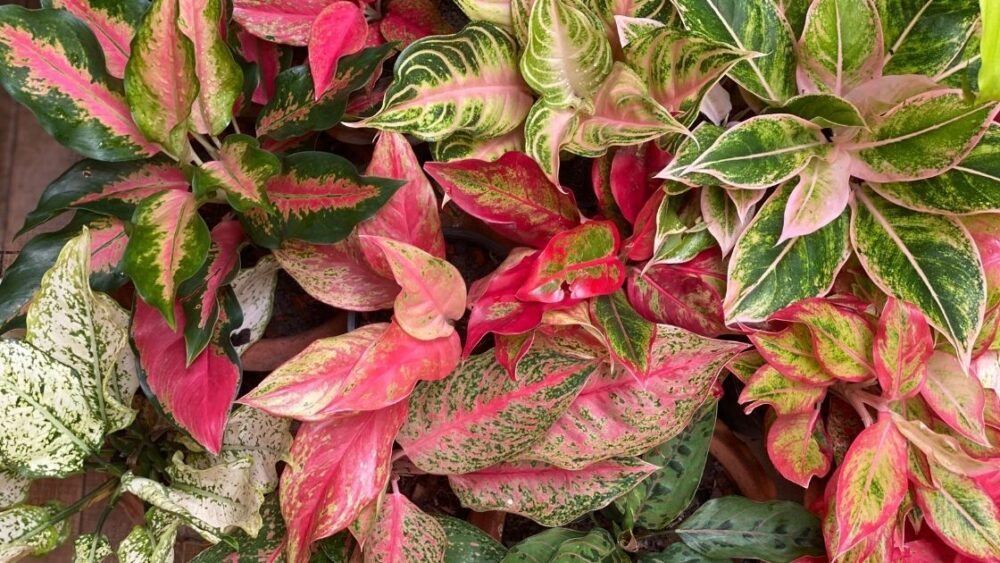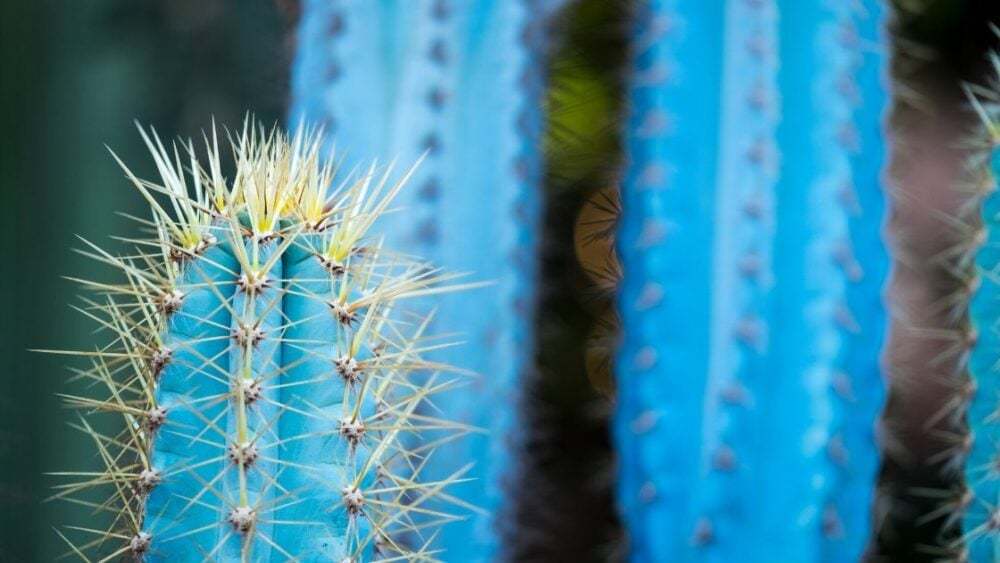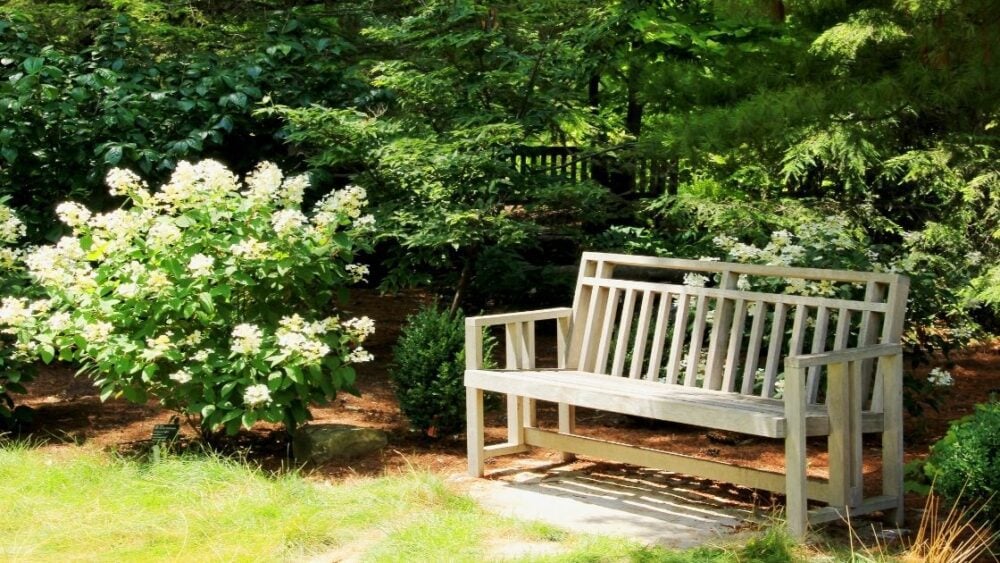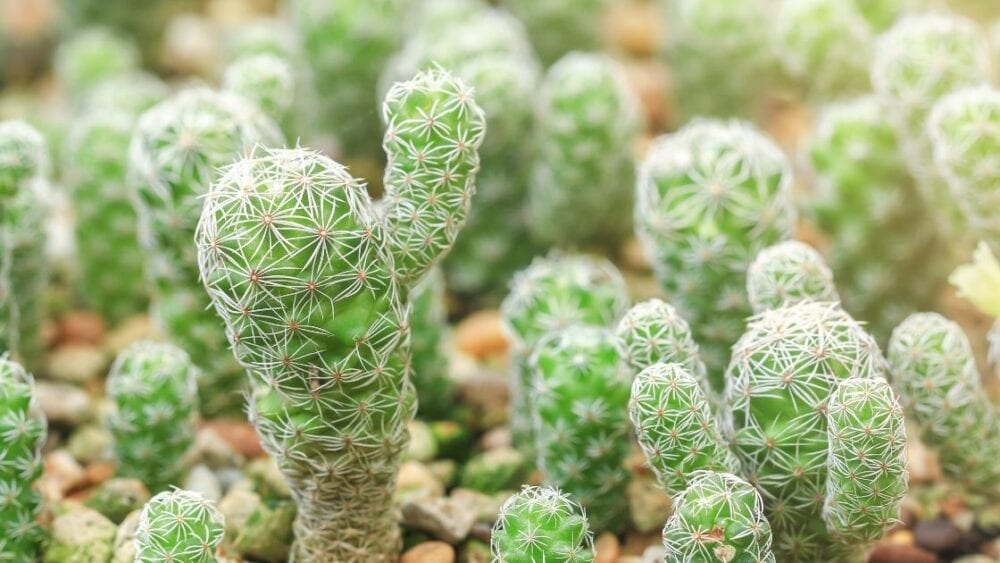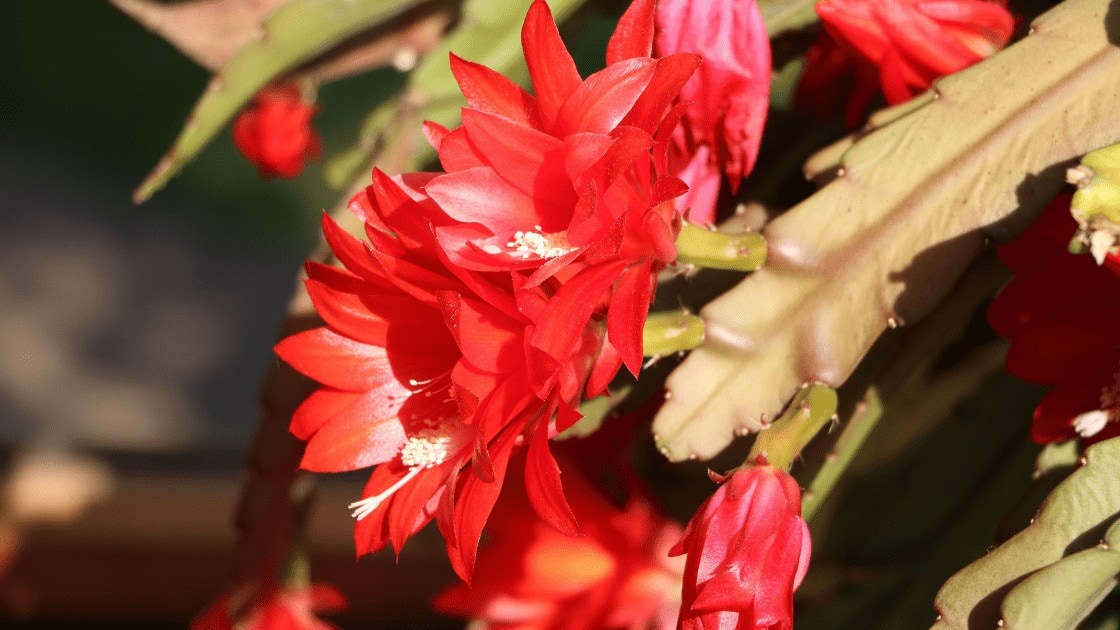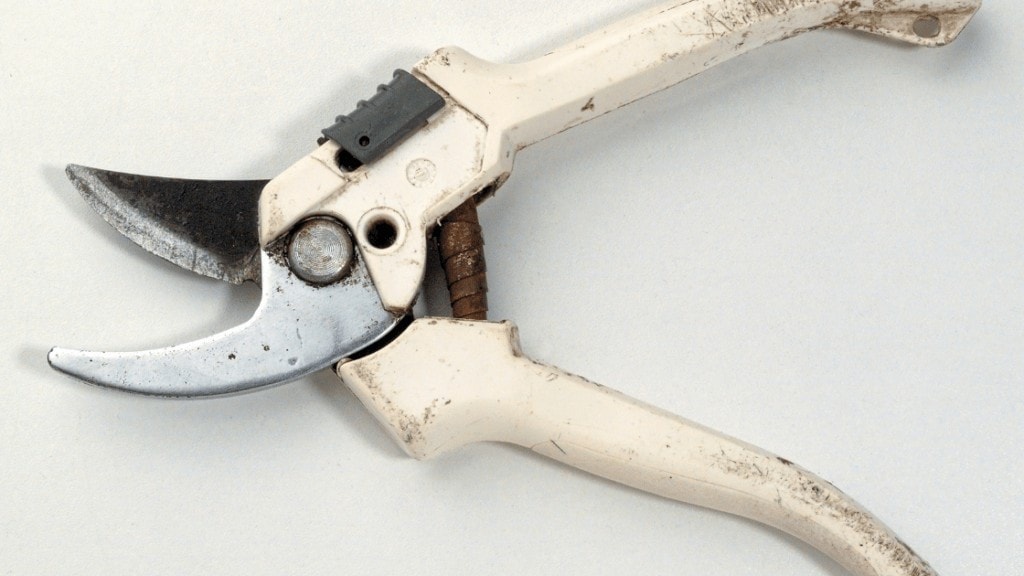
In this article we will discuss two reason why pruning shears are curved, why they work, and what their used for. If you have ever wondered why, read on.
If you have an outdoor garden, pruning is almost always an essential activity. Not only does it keep your shrubs and trees looking good and tidy, but it also serves an important function in annual, and new growth.
As with all pruning it forces plants to produce more branches, which lead to the development of more flowers. Also, pruning removes dead branches that suck energy from the plant. Pruning is typically performed in the autumn, near the end of the flowering cycle, but can also be performed year-round, depending on the plant.
Browse our Affiliate Products
Are Pruning Shears a Must-Have For Pruning?
Although there are a few non-woody plants that can be easily pruned by hand or even with standard household scissors, for almost all types of woody shrubs and trees, special pruning shears are an absolutely essential tool. They will save you a ton of time, energy and frustration and make it very easy to cut branches as thick as 1 and a half inch – something which otherwise can only be performed with the much larger and more time-consuming saw. However, using a saw may still be necessary for pruning large trees.
Also if your interested in Corona Tools, check out this article: Are Corona Tools Good? (Company Information and Product Guide)
Also, if your interested what tools should a beginner gardener have, or any tool that might be of use, check out our tools article below.
So, why are the blades on pruning shears curved?
Why Are The Blades of Pruning Shears Curved?
In fact, not all pruning shears are curved and in a bit we’ll briefly go over the few main types of blade designs. But pruning shears which have bypass blades are almost always curved. This serves two purposes.
- It improves the cutting action of the shears and enables the cut to be made with less force.
- It makes it easier to reach in-between branches in order to perform a cut.
However, the actual curvature of the blades is not a particularly important feature and is not that critical to the cutting action, so it’s not really a factor that should be taken into account when choosing suitable shears for your garden.
It’s more important to choose a tool that’s comfortable in your hands and which has corrosion-resistant blades.
How Does The Blade Curvature of Pruning Shears Improve Their Cutting Action?
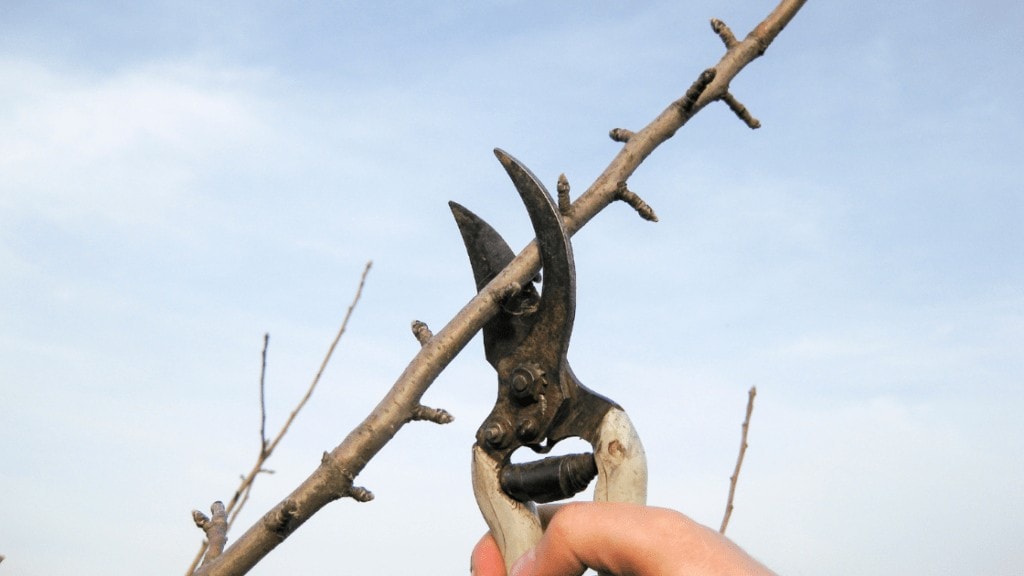
When you’re cutting a branch using pruning shears with bypass blades, there are two forces which act on the branch – the compressing, cutting force exerted by the blades coming closer together, and a much weaker, sliding force, which pushes the branch away from the blades.
The curvature of the blades optimizes the balance between the two forces and enables you to easily cut thick branches, without them sliding towards the tips of the blade, where the force would be greatly reduced.
It also makes reaching distant small branches easier, because the curved tip of the blade prevents your hands and the pruning shears from obscuring your field of vision.
Do All Pruning Shears Have Curved Blades and What Other Types Are There?
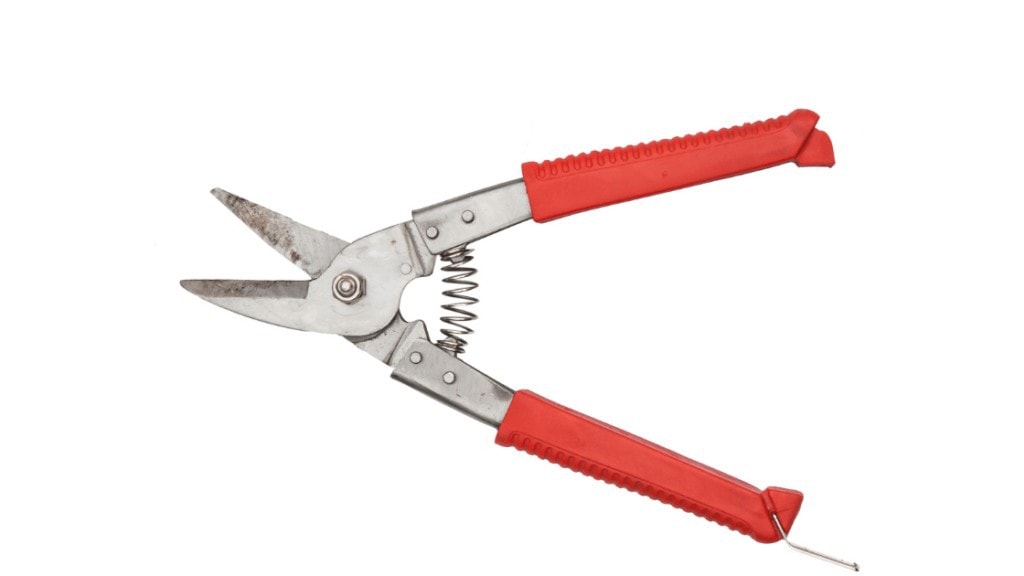
Not all pruners have curved blades. There are several types of pruning shears and some of them, like the anvil pruners do not typically have curved blades. To see why that is, let’s take a closer look at the most common types of pruning shears and what type of job are they are most suitable for!
Bypass Pruning Shears – This is the most common type, also commonly referred to as ‘basic pruning shears’. It has curved blades, for the reasons mentioned earlier. Bypass pruning shears act just like a scissor and have two blades passing over each other.
They can be used for almost all purposes, but because of their short handles, don’t give you a lot of leverage. If you don’t have very strong hands you’ll have a lot of difficulty cutting branches thicker than around half an inch with them.
Anvil Pruners – Those types of pruners don’t have a curved blade and their blades don’t bypass each other. Instead, anvil pruners apply crushing action. They are suitable for thicker branches, but can be a bit uncomfortable to use – they require strong hands and make a ‘snap’ as the branch is cut off, which can sometimes be loud and annoying.
However, they are cheap, lightweight and small. They are very common and widely available in all gardening shops.
Lopping Shears, or Loppers – Those are curved pruning shears with a very sharp upper blade and very long handles, which give you more leverage. They can be used to cut off branches as thick as an inch and a half without much effort and their long handles give you a lot of reach.
They are operated with two hands, which makes them overly complicated to use if the thickness of the stems doesn’t require them. Those types of pruning shears are great to have if you’ll be pruning small trees.
For more information on loppers, check out this article:
Parrot Beak Shears – Those pruning shears have a special blade design that completely prevents the branch from sliding off as you cut. They are one of the oldest designs of pruners and work well for almost any pruning job – they can be used to cut branches up to half an inch thick, but do require strong hands.
Ratchet Pruners – Ratchet pruners are the best choice if you’re looking for a small tool that can cut thick branches – they have a one-way latch that enables you to cut the branch in multiple steps or ‘squeezes’, which makes them perfect even for people who aren’t very strong. The blades of the ratchet pruners can have either a bypass or an anvil design.
Hedge Pruners – Hedge pruners are obviously used to prune hedges. They resemble large, long scissors, operated with two hands. They are one of the few types of bypass pruners that don’t have a blade curvature. Their blade design enables them to cut a large number of thin branches very quickly and efficiently. Because of their long, sharp blades, they can be dangerous to use.
Final Thoughts
As you can see, there are many different types of pruning shears, not all of which feature curved blades. This is by no means an exhaustive list, and other types of shears do exist as well, including electric ones.
In the end, they all perform a similar job and it makes little difference which one you’ll get, provided that it will be able to deal with the thickest branches in your garden. Single-hand operated pruners are typically only used for shrubs or small trees. For large trees, many additional tools exist, including long-pole pruning saws.
It’s important to consider the blade material of the pruning shears – cheap pruners usually have blades made out of carbon steel, which performs well, but quickly rusts when it comes in contact with acidic plant fluids. Titanium-coated, or stainless steel blades are much more durable and corrosion-resistant, but are also more expensive.





